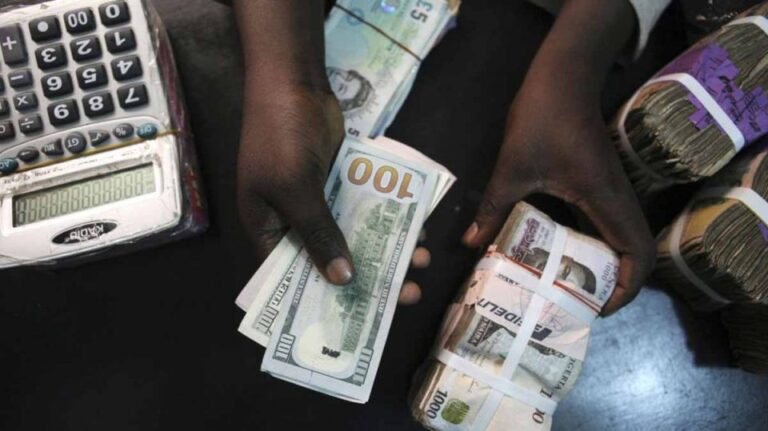Nigeria’s fiscal health is under intense scrutiny as analysts caution that the nation may be edging into a full-fledged debt trap. Mounting concerns point to a situation where the government increasingly relies on fresh borrowing to meet maturing obligations—raising alarms over the risk of sovereign default.
Over the past decade, Nigeria’s public debt has ballooned dramatically—up more than 1,000% in local currency terms. This surge is largely attributed to persistent fiscal deficits and the steep depreciation of the naira.
Explosive Debt Growth and Currency Devaluation
Data from the Debt Management Office (DMO), analyzed by Nairametrics Research, reveals that Nigeria’s public debt grew from ₦12.6 trillion in 2015 to ₦144.7 trillion by the end of 2024—an astronomical rise of over 1,048%.
While the debt increase in dollar terms is relatively moderate—climbing 44% from $65.43 billion in 2015 to $94.23 billion in 2024—the plunge in the naira’s value has intensified the fiscal pressure. The local currency depreciated by over 697% during the same period, sliding from ₦192.63/$ to ₦1,535.32/$, thereby inflating the cost of foreign debt service in naira terms.
Domestic borrowings—via FGN bonds, treasury bills, and savings instruments—also continue to weigh heavily on public finances.
A New Wave of Borrowing
Public debt is on course to rise further in 2025, with President Bola Tinubu requesting Senate approval for a new $21.5 billion foreign loan package. In addition, the federal government is seeking a ¥15 billion Japanese loan and a €51 million grant, underscoring its continued reliance on external financing.
Financial Experts Raise the Alarm
David Adonri, Vice Chairman of Highcap Securities, warns that the debt accumulation under the current administration is accelerating dangerously.
“In just two years, this administration has doubled the debt stock accumulated by the previous government in eight years,” he said. “While domestic borrowing may be monetized via Ways and Means—at the risk of inflation—foreign debt obligations require hard currency, which may not be readily available. This unchecked borrowing trajectory risks pushing Nigeria toward a sovereign default.”
Damilare Asimiyu, Head of Research at Afrinvest, pointed out that while revenue has improved—reaching ₦34 trillion in 2024—only ₦9.44 trillion was retained by the federal government for actual budget execution, with the remainder allocated to states and statutory agencies.
“Meanwhile, expenditures surged to ₦25 trillion, creating a budget deficit of ₦15.6 trillion,” Asimiyu noted. “FGN debt rose by ₦46 trillion in a single year, pushing the national debt to ₦144 trillion. The sharp depreciation of the naira has drastically increased the local cost of dollar-denominated obligations, even though they represent just 38% of total debt.”
Ayegbeni Kanabe, Chief Compliance & Risk Officer at Zigma-Alpha Asset Management, highlighted that debt becomes problematic when disconnected from economic returns.
“Borrowing is not inherently negative,” he explained. “But when loans are misapplied—used for recurrent expenditure or unproductive ventures—they become a liability. Transparency, accountability, and project-driven debt are essential for sustainability.”
Kanabe added that the public must be made aware of the benefits of debt-financed projects, as growing debt without visible development erodes trust and raises socio-economic concerns.
Key Drivers of Nigeria’s Rising Public Debt
-
Severe Currency Depreciation
The naira’s fall from ₦192.63/$ in 2015 to ₦1,535.32/$ in 2024 has significantly inflated the naira-equivalent of external debt obligations. -
Chronic Budget Deficits
Persistent gaps between revenue and expenditure have driven recurring borrowing. The 2025 budget includes a projected deficit of ₦13.39 trillion. -
Weak Revenue Retention
Despite ₦34 trillion in gross revenue for 2024, only ₦9.44 trillion was retained for federal use. Structural issues like poor tax collection and oil dependency limit revenue mobilization. -
Rising Debt Service Costs
Debt servicing climbed from ₦8 trillion in 2024 and is projected to double to ₦16 trillion in 2025—consuming a substantial portion of government expenditure. -
Heavy Reliance on External Loans
Nearly half (48.59%) of the total debt is externally sourced, exposing Nigeria to foreign exchange and global interest rate risks.
The Path Forward: Policy Recommendations
To avert a looming debt crisis, experts recommend urgent structural reforms:
-
Enhance revenue generation through improved tax systems and diversification of export earnings;
-
Curtail fiscal deficits by streamlining government spending;
-
Avoid loans for consumption and direct borrowing toward infrastructure and productive sectors;
-
Improve transparency and project impact visibility to strengthen public trust and investor confidence.
Failure to implement these reforms could erode macroeconomic stability, reduce investor inflows, and strain the government’s ability to fund critical services such as health, education, and infrastructure.

